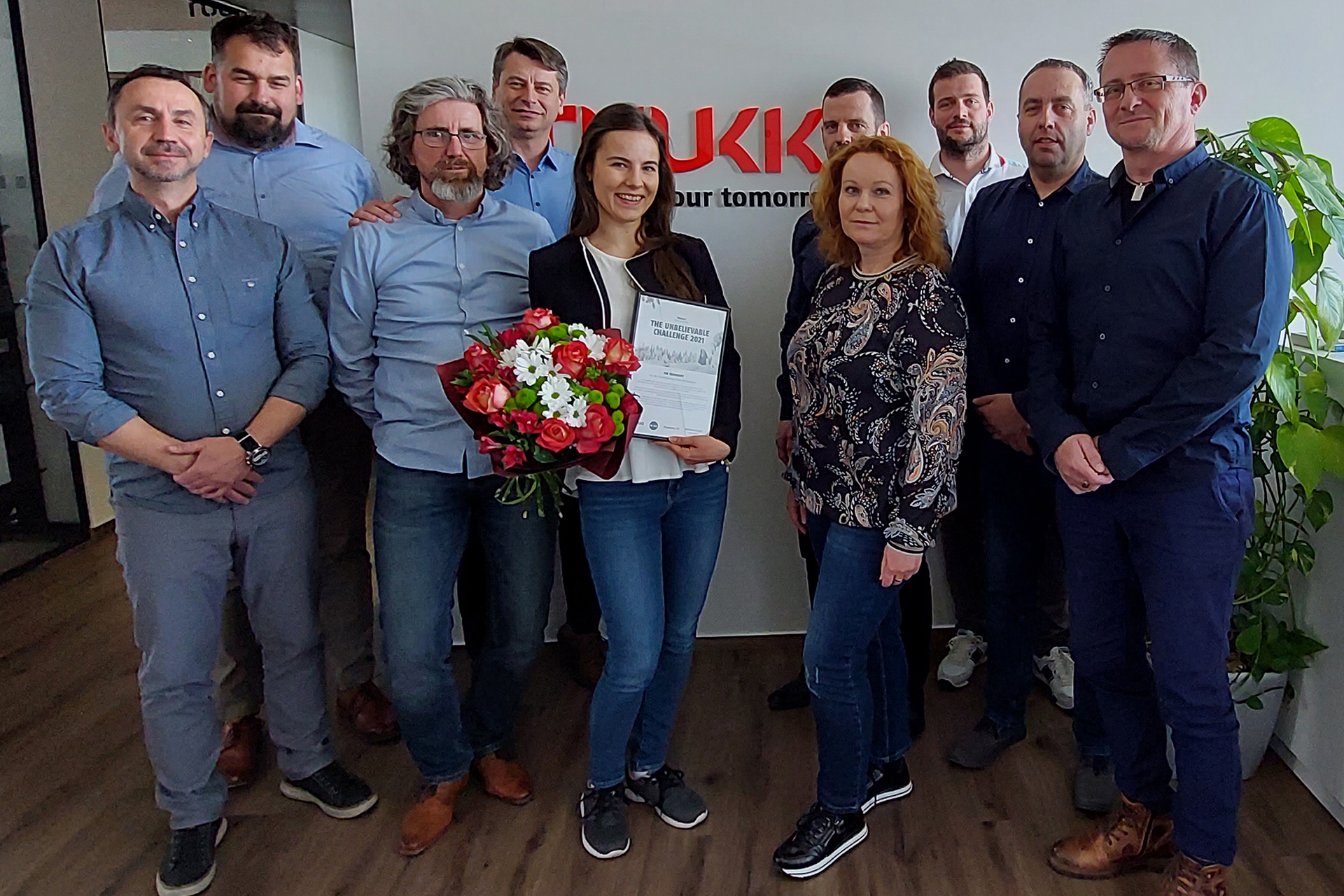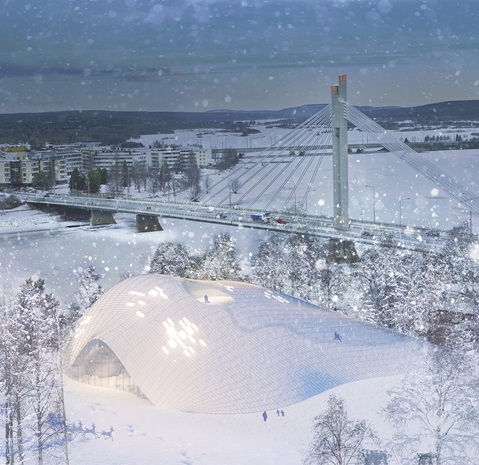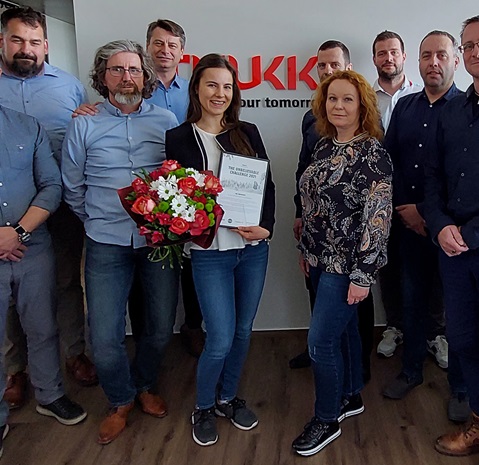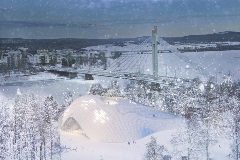Earlier this spring, we introduced one of The Unbelievable challenge 2021 finalists, Štefánia Vasilková from Slovakia. She told the story about how she became who she is. Now we continue introducing more finalists - two architects from Czech Republic; Alice Šindelářová and Petra Macholánová. Alice is the author of the final design called The Snowdrift. Petra played an important role in providing feedback and helping Alice make her design perfect. Great teamwork led to a top five finish in the competition.
The Snowdrift reflects sustainability and energy efficiency
Snowdrift’s design utilizes sustainable materials and forms the building into the shape of a snowdrift. Although the building is complex, its steel construction and glass-fronted style make it light and airy. The building has an open entrance to the urban area without disturbing the existing panorama.
“Yes, it was a difficult task,” Alice says and continues: “Especially because there were many spatial requirements. The approach to architectural design has transformed during the past few years. Sustainable and self-sufficient buildings have become a standard. This is probably why sustainability was the focal point of the competition. Materials are nowadays to a large extent recyclable and buildings get more and more self-sufficient”.
How did The Snowdrift come into existence?
“At first, I thought what kind of feelings and experiences I want to evoke in the Museum’s visitors. That affected the choices in material and spatial arrangements. I looked up the requirements on Ruukki webpages, and I learned about the artistic possibilities of using panels in architecture. The competition encouraged a new approach to facade cladding. Therefore, I created my own panels using changeable incidence of lights and shadows into the interior during a day or a season. Then all the time, I had remote consultations with Petra on the individual steps and she always gave me feedback.
Great learning experience for young architects
“It’s important for young architects to gain practical experience and try several competitions in order to gain publicity at the beginning of their career. I learned a lot during the competition. It was my first time designing organic architecture. Also presenting the design to the international jury was a great experience. I hope the competition will continue in the next years. Prior The Unbelievable Challenge, I won a Lumion Interior Design Prize for interior visualisation in the competition Inspireli Awards. These two successes have helped me gain more confidence and confirmed that my career choice was the right one,” Alice concludes.
What made Alice and Petra study architecture?
Alice: “I’ve always loved drawing and being creative. After high school, I thought about studying metal and jewellery design but ended up to the Faculty of Civil Engineering to study Architecture and Civil Engineering. In architecture, I like the diversity of activities, projects and people one may meet. You can see the results of your work in the real life and unleash your creativity from time to time. After finishing high school, I knew I was able to learn a lot in a short time, yet I was surprised how demanding and time consuming it was to study architecture. There were times I thought I would not make it. After two years, I left for Erasmus studies to Denmark where I met Petra and that motivated me in following years. I also took a week of study programme, which led me to Belgium where I have been on an internship.”
Petra: “Architecture was a clear choice for me. It presents an amazing connection of techniques and arts and it is a super universal field. An architect doesn’t necessarily have to design houses, there are a wide range of possibilities. But I do not mean to get too far from “the core” of architecture. The studies definitely took a lot of time but I was ready for that. However, looking back, I am sorry that some subjects did not have much practical use in the end. Regarding the school selection, architecture studies at the Faculty of Civil Engineering make the most sense to me. The studies take 6 years of which 1 year consists of practice in a studio. Many senior students keep working during their studies, as did I as well. I hope that going forward, the potential of uniting various fields from engineering is utilized more, and there will be more common projects connecting architects, analysts, civil and water engineers.”

Photo: We had a pleasure of celebrating Alice Šindelářová and the success of The Snowdrift at our office in the Czech Republic. She introduced her design to Ruukki’s experts in the office.





.tmb-250x190.jpg?sfvrsn=607438b5_1)









